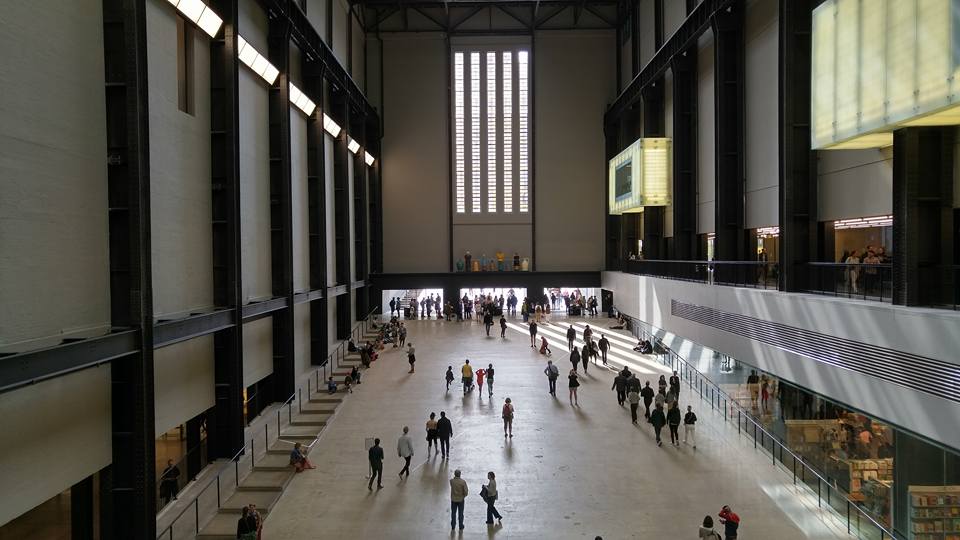Forty four years ago today, workers in Chicago completed the Sears Tower:
The original plan was to build two separate buildings. That was changed to a single structure, 1,454 feet high. As board chairman Gordon Metcalf explained, “Being the largest retailer in the world, we thought we should have the largest headquarters in the world.”
Construction began in 1970. The foundations were dug, and the steel frame began to rise slowly over Wacker Drive. On the way up, the Sears Tower passed the former record holder, the twin towers of the World Trade Center in New York.
The Sears Tower kept is title until 1996. Today all the sky-piercing structures are going up in Asia.
Meanwhile, in 1992, Sears again moved its headquarters, this time to Hoffman Estates. The tall building on Wacker Drive is now known as the Willis Tower.
And in the meantime, Eddie Lampert has poisoned the company to death.
Property values in Chicago's Trump Tower have declined as other similar properties have gotten pricier. Go figure:
"I've never seen such a glut" of condos for sale, said real estate agent Carla Walker of KoenigRubloff Berkshire Hathaway. "When people live where they've paid $1.5 million and up, they don't want to see people hanging out and demonstrating. And there's still a stigma there for some people."
The number for sale "is amazing," said Gail Lissner, vice president of Appraisal Research Counselors. "I've never seen that number for sale since they opened, and there have been very few transactions."
Only four units sold this year, and there was a decline in the number sold last year compared with the previous year, she said. There are about 52 residential units for sale now. With the addition of the hotel condos also on the market in the building, the number of units for sale jumps to about 70.
Based on the residential units alone, the number of available condos in Trump Tower is almost three times higher than other large condo buildings downtown, according to Lissner's data. No comparison is perfect, because the very high-end Elysian and Waldorf buildings are small with little turnover in units. But Lissner said that while Trump Tower has 52 of its 486 units on the market, the John Hancock building has 26 out of 703 for sale; Water Tower Place has 9 out of 260 for sale; Aqua has 12 out of 262 for sale; 340 on the Park has 11 out of 343; 600 N. Lake Shore Drive has 20 out of 395; and The Heritage has 5 out of 358.
Apparently the massive "TRUMP" logo on the southeast wall of the building is not what people in heavily-urban, heavily-Democratic Chicago want to pay extra for.
Chicago is experiencing sustained 48 km/h winds with gusts up to 68 km/h, which has a noticeable effect on the building I work in. Sears Willis Tower was designed to sway in high winds. Over the years, however, material and building techniques have changed, so occasionally windows blow out of our upper floors. Fortunately this hasn't happened in almost 7 years, but these winds are high enough today that we may have to close the upper floors.
I may pop up to 66 today just to feel it. At that floor, the building can sway almost 3 m. I'm feeling a little dizzy and I'm only a third the way up.
And I haven't fully read any of these:
Only a few more hours until we see how much closer to Rome we get.
Growing up, one of my favorite things in the whole world was the O-gauge model railroad at Chicago's Museum of Science and Industry. Atlas Obscura describes the $3.5m refurbishment that opened in 2002:
The exhibit focuses on the intersection of transportation infrastructure and economic activity—the intercity elevated train, suburban commuter rail, and cross country freight lines, all buzzing with a vibrant post-WWII industrial economy of decades past.
The trip begins in Chicago, which is the most recognizable area to a contemporary visitor. Iconic buildings like the Sears Tower and downtown neighborhoods like the Loop are shown in a spellbinding level of detail, replete with miniature cars, pedestrians and vegetation. Tiny electric trains scoot around through the skyscraper valleys and every half hour the museum lights dim as the exhibit enters “nighttime mode.”
As the exhibit moves westward five foot tall Rocky Mountain peaks rise into the air. The tracks cut through mountain tunnels and lumber towns before finally catching sight of the Pacific Ocean and the Port of Seattle. A hulking container ship is docked on the coast, ready to receive the raw materials and manufactured products collected along the 2,000 mile route from Chicago.
It's even cooler than the layout they had back in the day. And it's still one of my favorite things in the world.
For a couple of odd timing reasons, this is my first full 5-day week at my new job...and it's already a 5½-day week. So I've barely enough time to jot these articles down for future reading:
Have fun. I'll catch up to these in a day or two.
Today was pretty full. I took a train to Tring, hiked for two hours, came back to London, and walked around Kensington for a couple more. Now it's 11pm on Sunday night and everything is closed.
I won't have all the photos I took yesterday and today ready until I get back to Chicago, but here are a couple. First, the Tate Modern:

Second, this guy, who rode in my train carriage on the way back from Tring:

These are just from my phone. I did lug my real camera all over the hills of Buckinghamshire today, so I'll have real photos later in the week.
It turns out, Chicago has more revolving doors than any other city in the U.S.:
Angus MacMillan, the national sales manager for Crane Revolving Doors, says Chicago and New York are the biggest markets for revolving doors, and that Chicago was the No. 1 market for decades. He thinks downtown Chicago may have more revolving doors per block than New York: “I get my [sales] reps in from all around the country, and I’ll take them to downtown Chicago, and they’ll count more revolving doors in one block there than they have in their whole city.”
Architect Patrick Loughran of Goettsch Partners says Chicago’s still got a lot of revolving doors because we have so many tall buildings.
“Any high rise building is going to have to have elevator cores that take people from the bottom all the way up,” he says. “Those big open tubes create the stack effect where heat and air rise, and it creates this suction at the base of the building.”
Concerns about the stack effect in highrise buildings only partially explain why the revolving door is so common in the Chicago landscape. Because, if you take a stroll around the Loop, you’ll see contemporary low rise buildings with revolving doors as well: drug stores, restaurants, cafes, and clothing retailers. The likely reason doesn’t have to do with countering the stack effect. According to MacMillan, it comes down to comfort and economics — the need to maximize floor space.
I love WBEZ's Curious City series because of stories like this.